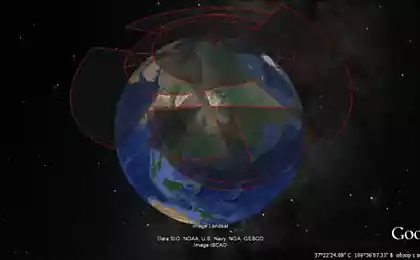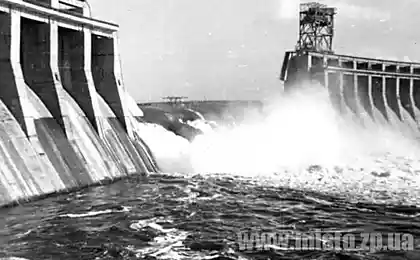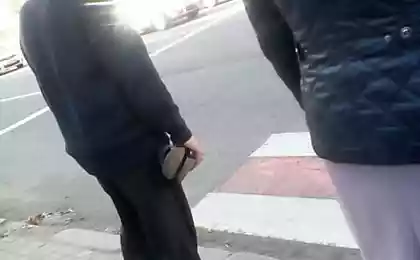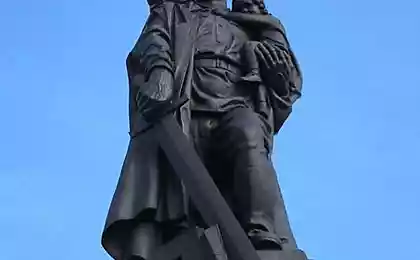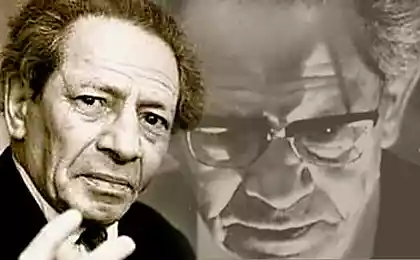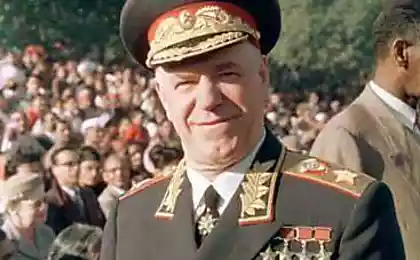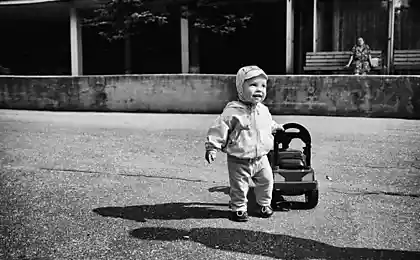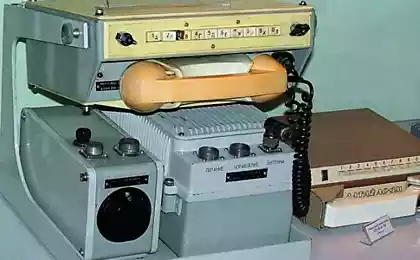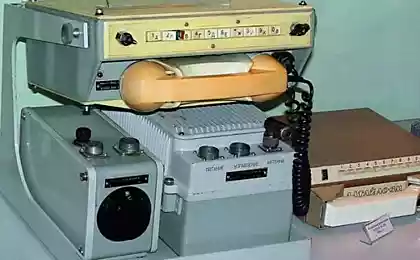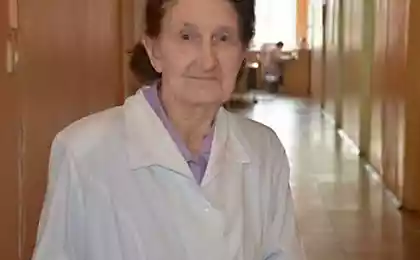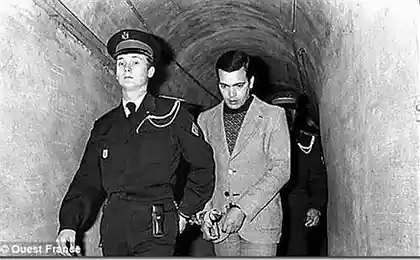1230
Voronezh 70 years ago freed from Nazi PICKUP
Voronezh as Stalingrad was destroyed almost completely (about 98% of the buildings). 212 days and nights of fighting the invaders our city. January 25, 1943 Soviet troops of the 60th Army under General ID Chernyakhovsky was released Voronezh. On the outskirts of the city destroyed 26 German divisions, and the number of prisoners was more than Stalingrad.
The history of liberation in figures
30 enemy divisions from 90 to move to Stalingrad, riveted the Voronezh during Operation "Blau", for which he later called "Stalingrad on the Upper Don».
350 acts on invaders crimes against civilians on the territory of our region have been registered by the Commission of the Voronezh Front. The most famous of them - the mass executions in Sandy ravine in the village maiden Semiluki area in Rossosh.
100,000 Hungarian soldiers and officers were taken prisoner for two weeks of fighting near Voronezh. The defeat of the Hungarian 2nd Army in the Voronezh region has become a major defeat for all its thousand-year history. 300 of our countrymen received the title of Hero of the Soviet Union. 46 graves of Soviet soldiers is located within the city of Voronezh. In these mass graves - more than 27,000 soldiers.
Since the end of June 1942 to 25 January 1943, Soviet troops defended Voronezh, performing an important task - covered Moscow from the south and the Hungarian forces pinned down the divisions. July 6 The Germans entered the right-bank part of the city. Especially difficult battles were fought on the outskirts of the city - near Birchwood, the stadium "Dinamo", Lenin Street, Hippodrome ... More than 6 months, the front line passed through the city.
In late 1942, the newspaper "Pravda" noted that the German plans for the successful conduct of hostilities disrupted due to the courageous defense of Voronezh.
In 1942, the Voronezh Front was created. During the offensive, "Little Saturn" and then Ostrogozh-Rossoshanskij and Voronezh-Kastornoye offensive operations by the Voronezh Front were defeated 2nd German, Italian 8th and 2nd Hungarian army. This loss of German troops was 320 thousand soldiers and officers.
January 25, 1943 Soviet troops of the 60th Army under General ID Chernyakhovsky was released Voronezh. On the outskirts of the city destroyed 26 German divisions, and the number of prisoners was more than Stalingrad.
In occupied territory, the invaders established a regime of terror and brutal violence
Voronezh region on the first day of the war was on a war footing. It was introduced by dimming to Nazi pilots could not see any lights. Installed air-raid signals. The population bomb shelter snout and crevices. The front was still far away, but the Germans were advancing.
Living area was reconstructed on a war footing. In the autumn of 1941 the enemy air raids on Voronezh. In summer 1942 the German invaders managed to break through the front. Enemy aircraft began the brutal bombing of the city of Voronezh. The city was burning.
In occupied territory, the area of the invaders established a regime of terror and brutal violence. Capturing part of Voronezh, the Nazis decided to expel from the city of all its residents. He was issued a special decree by which Voronezh had 24 hours to leave the Voronezh. Those who could not walk were shot on the spot. So, in the courtyard of his house he was shot the famous painter A. Buchkuri.
July 8, 1942 on the street Proletarian liaison with the guerrillas was shot mechanic plant them. Dzerzhinsky Vasily Simonov, along with it - citizen Pavlov and an elderly man, whose name remains unknown. The next day, on the same street hanged five men accused of the murder of a German soldier. July 27 telephone pole hung Gabriel Mitrofanovich Tolstoy, who tried to set fire to the headquarters of the German part.
Do not established the circumstances of execution and the names of the 34 people hanged on the trees fascist executioners Pervomaisky garden. It remains unclear who was a young woman, who was executed on the balcony of the house number 77 on the street of Sacco and Vanzetti. Her breasts hung a plaque with the inscription: "Medical practice. Hanged for espionage ».
From July 3 began the battle for Voronezh. Fighting took place in urban areas, on the streets, among the rubble. These street fighting lasted for 212 days.
The Nazis were not able to capture Voronezh completely. Left Bank remained in the hands of Soviet troops. In August 1942, Soviet troops captured the small territory on the right bank of the river at the dam Vogresovskoy. It was here in January 1943, he was struck one of the attacks on the German fascist troops, entrenched in Voronezh.
Voronezh was freed as a result of the Voronezh-Kastornoye offensive.
The battle for the city lasted for eight days, from 24 January to 2 February 1943.
The battle involved the 38th, 40th and 60th Army of the Voronezh Front and the army of the Bryansk Front and the military of the two air armies.
Hostilities began in the morning January 24, 1943, when the Soviet command was given the order to attack in the area Kastornov and Voronezh, in order to prevent the penetration of the enemy to Kharkov and Kursk. The plan was to encircle the main forces of the enemy and destroy them.
The first speaker was the 40th army. Thanks to the selfless actions of Soviet soldiers managed to neutralize the enemy surrounded him near Voronezh. The battle was not easy, as everyone seemed to prevent the victory - a strong blizzard, cold, wind, and the enemy forces were equal. By the end of the day the Soviet army advanced in the direction of Voronezh in the 20 - 25 kilometers.
At the same time, it was ordered to withdraw the enemy of Don. Defeated in battle, the German High Command ordered to blow up the city and bring out all the valuable. But Soviet intelligence in time reported on the current situation, and the 60th Army was ordered to immediately go on the offensive.
General Ivan Chernyakhovsky ordered the army offensive on all fronts and gave a course on the destruction of the enemy.
Already in the morning the next day, January 25, the left part of the city has been completely liberated from the enemy forces. On the balcony of the hotel "Voronezh" Soviet soldiers hoisted the Red Flag symbolic liberation.
Despite the release, the city was completely destroyed. In Voronezh, almost no whole houses, all the factories and institutions were destroyed by shells. On the streets of silence was scary, as residents in the city was virtually no - all the evicted Germans. The city began to come alive, but for how long to remember those terrible days.
January 26, 1943 the Soviet Information Bureau reported: "January 25 troops of the Voronezh Front launched an offensive in the region of Voronezh, overturned part of the Germans and completely captured the town of Voronezh. The eastern shore of the River Don in the area west and southwest of the city is also cleared from the Nazi troops ».
Developing the offensive, the troops of the Voronezh and Bryansk fronts completely liberated Voronezh region, and then without a break launched an offensive on the Kursk, Belgorod and Kharkov further.
The feat of the city of Voronezh in World War II was marked by high government award -ordenom World War I level, and in 2008 the city of Voronezh high rank - & quot; City of Military Glory & quot ;.
Nineteen history teacher from Panino District, during the battle for Voronezh became prozhektoristkoy
Not only men, warriors fought to the death, defending every inch of Voronezh land, women also struggled to hasten the day of liberation of Voronezh. One of those women was a young history teacher Verhnekatuhovskoy school Seraphim Panteleevna Galtseva. Before the war, 19-year-old girl, she came to the school to teach history. But not for long she had to teach rural children. In October 1942, Seraphim Panteleevna Galtseva was summoned to the military commissariat, where she and many other young women reported that they were sent to Voronezh, to help our brave soldiers. After a short training Seraphim Panteleevna became prozhektoristkoy. She was looking in the night sky over the city of Voronezh fascist planes, thereby helping gunners sbivatih not only during the day but also at night. Prozhektoristskaya point Galtseva VOGRESovskoy located on the causeway. And until the liberation of the city Seraphim Panteleevna rummage sky over the city, bringing the Great Victory.
After the war she returned to teaching and taught children Panino school until retirement.
"Three sons - three aircraft - this is my gift to the Red Army»
When Nazi troops were driven out of Voronezh, Berlin radio reported that Voronezh "is not currently of no value." The Nazis claimed that the Bolsheviks would take 100 years to restore the economy and the Voronezh region. However, residents of our region have refuted predictions Nazi prophets. After the troops in the liberated towns and villages included residents. First of all it was necessary to defuse the streets, buildings, approaches to their homes. Only in Voronezh Germans left more than 300 thousand minutes.
Residents of Voronezh region and worked selflessly not only to the recovery of the economy of his native land. On the first day of the war, they were actively involved in the national movement for the collection of funds by the Soviet Army. A feat worthy of respect Miron Alexandrovich Polianichko - beekeeper selhozarteli "Citizens Council" s. Annovka (now s. Aleinikova) Rossoshansky area. He contributed to the defense fund of the country of 300 thousand. Rubles. His three sons were killed at the front. "Three sons - three aircraft - this is my gift to the Red Army." - Said MA Polianichko.
In one ranks with the soldiers, crushed the enemy at Voronezh Front in the terrible years of the Great Patriotic War, in 1941-42 there were toiler rear of the war years, which in the cold and hunger, the cold and the summer heat on an equal basis with men provided invaluable assistance to the front. One of these remarkable women were Zinaida Semenovna Pavlov, born in 1923.
Article from the newspaper "Nash Kraj", January 2008.
Down and wholly taken in the frontline rear Zinaida, along with other boys and girls. In the early days of the war they were sent to the most spearhead fighting - at the direction of Smolensk, where they did not know the day or night, working on digging trenches.
- At the end of 1942, when came the great turning point in the battle, and our troops began to counterattack, we were sent home, - says Zinaida Semenovna. - And since we have built fortifications away from the railroad had several days to go to the nearest station on foot. It was dangerous, above us and then flew German planes, the bombing occurred, with easy access to the train station and a freight car freight train returned to Tulinova. But stay at home for a long time was not necessary. Day January 25, 1943 became the biggest holiday. On this day, the radio announced that the Voronezh liberated from the enemy. Again on the road. Young people from Upper Katuhovki on horse sleigh in late January brought to the station Tulinova. There were boys and girls from other villages of our area.
Once again, we were loaded into the boxcar freight train and taken to the newly liberated from the enemy Voronezh. The winter was harsh. The city lay all broken in ruins. We were divided into groups, arranged for the night in the surviving barracks.
We worked the whole day without days off to clear debris. Often we found in the dismantling of our wounded and shell-shocked soldiers. Then we are throwing everything freed from the wreckage and transferred to the infirmary. There were a lot of dead bodies, as a soldier - and ours, and German, as well as civilians. The corpses were loaded onto a sled and myself were taken to set a place for burial in mass graves.
Analyzing the ruins surviving bricks were sorted by hand in one place, broken glass - in another, construction waste, debris - in the third. We feed those food reserves that are found in the analysis of the debris is pasta, cereals, bread. Every day our barracks, we heat the a bourgeois, brought hot water.
Ahead of us were sappers, they cleared another facility for further analysis. But there were cases where some of the mines remained undetected, and our workers blew on it.
Departing from Voronezh stronghold, the enemy tried to permanently wipe out the beautiful city, which he never managed to conquer. German barbarians destroyed the factory buildings, blew the best public buildings: University Station, Palace of Pioneers ... Mitrophanievskoye was destroyed the monastery and its bell tower. Damaged buildings Philharmonic broken colonnade old house Tulinova. In the city of 18 thousand houses burned. According to eyewitnesses, after the liberation of Voronezh is a solid ruins - a shapeless heap of stones and iron beams, covered with rubble and broken glass wasteland, only in some places instead of houses burned miraculously survived boxes with empty eye sockets of windows. All that remained of the fire and bombs during the fighting for the town, the Germans blew up before fleeing from Voronezh.
The German newspapers were quick to declare Voronezh unrepairable. Contrary to expectations, the Nazis, the residents were able to self-denying work to rebuild the city in just five years (according to the standards required for several decades).
City Voronezh released, but the war is still not over. Ahead of our soldiers a long way to Berlin, to the victory ...
The struggle for the liberation of Voronezh were not only adults but also children
In the summer of 1942 a young intelligence officer Konstantin Feoktistov, future scientist-astronaut, not once crossed the river. Voronezh from the left bank to the right to get valuable information to the Soviet command. One day he was captured by the Nazis, was wounded, barely alive, but this time carried out a combat mission. Then Voronezh schoolboy Kostya Feoktistov was 16 years old. Then it will be known worldwide cosmonaut, Hero of the Soviet Union ......
Kostya Strelyuk was a student of the Voronezh school number 1 (currently number 11). At the front, he volunteered. Hit the celebrated guerrilla unit Kovpaka SA, where he became a scout. Many guerrilla campaigns did Kostya Strelyuk. He died a hero's death a young intelligence officer in Ukraine.
Exceptional heroism displayed in the defensive battles at Kursk Voronezh resident Dmitriy Chebotarev. Gunner antitank gun, he destroyed four enemy tanks and self-propelled gun. Even being wounded Dmitry has not left the field of battle and set fire to two tanks. D. Chebotarev died July 6, 1943 was buried near the station Ponyri Kursk region. Decree of the Presidium of the Supreme Soviet on August 7, 1943 Guards Junior Sergeant Chebotarev was posthumously awarded the title Hero of the Soviet Union.
Together with all the people to fight the Nazis rose young inhabitants of the Voronezh region. They helped adults not only in the rear, but in border areas and at the front.
Little heroes crossed the front line, like a schoolgirl Lily Liskinsky Fedodeevoy which repeatedly crossed over to the Nazis seized the bank of the Don, to collect information and report them to the Soviet command. Many pioneers went sneaking out of the house and become sons of regiments as George Dennis, who was only 12 years old, Edward Molchanov, who turned 13 years old, and Sasha Varkel - 14-year-old soldier from Ramon. They were cohesive guerrilla groups and regular intelligence units of the Soviet Army.
By the end of 1943 it has been restored VOGRES earned many utilities, meat, creamery, went through the streets of the trams. Much attention was paid to the restoration of Voronezh plant refractories. In 1943, these companies have given more than 15 thousand tons of refractory bricks.
Victory Day - May 9, 1945 - the inhabitants of Voronezh and Voronezh region joyfully greeted by the entire Soviet people. And in the year of the 30th anniversary of victory for their courage and heroism during the Great Patriotic War, and the successes in the development of the national economy Voronezh he was awarded the Order of the Patriotic War of 1 degree.
In 1947, the Voronezh ceramic factory was founded in 1954, he began his work. In 1950 he was commissioned in the tire factory.
To restore the city needed qualified personnel builders. That's why in 1946 in Voronezh was created FZO school (later PU-12). The first release of the young builders of the specialty, went to raise the city from the ruins. In the same year it was opened, and Civil Engineering (later it was renamed Voronezh mounting College), now Voronezh College building technologies.
Monuments to the heroes
Together with factories and residential buildings in the city and monuments erected to the soldiers who died during the Great Patriotic War. Here are some of them.
Monument of Glory. In the area of Moskovsky Avenue and Highway Zadonsk the summer of 1942 were the defenders to death. It killed thousands of Soviet soldiers and officers. The memory of brave warriors perpetuated the memorial: the figure of a fallen soldier, above which shows the silhouettes of women and children, a number - a bowl of eternal fire.
Source:
The history of liberation in figures
30 enemy divisions from 90 to move to Stalingrad, riveted the Voronezh during Operation "Blau", for which he later called "Stalingrad on the Upper Don».
350 acts on invaders crimes against civilians on the territory of our region have been registered by the Commission of the Voronezh Front. The most famous of them - the mass executions in Sandy ravine in the village maiden Semiluki area in Rossosh.
100,000 Hungarian soldiers and officers were taken prisoner for two weeks of fighting near Voronezh. The defeat of the Hungarian 2nd Army in the Voronezh region has become a major defeat for all its thousand-year history. 300 of our countrymen received the title of Hero of the Soviet Union. 46 graves of Soviet soldiers is located within the city of Voronezh. In these mass graves - more than 27,000 soldiers.
Since the end of June 1942 to 25 January 1943, Soviet troops defended Voronezh, performing an important task - covered Moscow from the south and the Hungarian forces pinned down the divisions. July 6 The Germans entered the right-bank part of the city. Especially difficult battles were fought on the outskirts of the city - near Birchwood, the stadium "Dinamo", Lenin Street, Hippodrome ... More than 6 months, the front line passed through the city.
In late 1942, the newspaper "Pravda" noted that the German plans for the successful conduct of hostilities disrupted due to the courageous defense of Voronezh.
In 1942, the Voronezh Front was created. During the offensive, "Little Saturn" and then Ostrogozh-Rossoshanskij and Voronezh-Kastornoye offensive operations by the Voronezh Front were defeated 2nd German, Italian 8th and 2nd Hungarian army. This loss of German troops was 320 thousand soldiers and officers.
January 25, 1943 Soviet troops of the 60th Army under General ID Chernyakhovsky was released Voronezh. On the outskirts of the city destroyed 26 German divisions, and the number of prisoners was more than Stalingrad.
In occupied territory, the invaders established a regime of terror and brutal violence
Voronezh region on the first day of the war was on a war footing. It was introduced by dimming to Nazi pilots could not see any lights. Installed air-raid signals. The population bomb shelter snout and crevices. The front was still far away, but the Germans were advancing.
Living area was reconstructed on a war footing. In the autumn of 1941 the enemy air raids on Voronezh. In summer 1942 the German invaders managed to break through the front. Enemy aircraft began the brutal bombing of the city of Voronezh. The city was burning.
In occupied territory, the area of the invaders established a regime of terror and brutal violence. Capturing part of Voronezh, the Nazis decided to expel from the city of all its residents. He was issued a special decree by which Voronezh had 24 hours to leave the Voronezh. Those who could not walk were shot on the spot. So, in the courtyard of his house he was shot the famous painter A. Buchkuri.
July 8, 1942 on the street Proletarian liaison with the guerrillas was shot mechanic plant them. Dzerzhinsky Vasily Simonov, along with it - citizen Pavlov and an elderly man, whose name remains unknown. The next day, on the same street hanged five men accused of the murder of a German soldier. July 27 telephone pole hung Gabriel Mitrofanovich Tolstoy, who tried to set fire to the headquarters of the German part.
Do not established the circumstances of execution and the names of the 34 people hanged on the trees fascist executioners Pervomaisky garden. It remains unclear who was a young woman, who was executed on the balcony of the house number 77 on the street of Sacco and Vanzetti. Her breasts hung a plaque with the inscription: "Medical practice. Hanged for espionage ».
From July 3 began the battle for Voronezh. Fighting took place in urban areas, on the streets, among the rubble. These street fighting lasted for 212 days.
The Nazis were not able to capture Voronezh completely. Left Bank remained in the hands of Soviet troops. In August 1942, Soviet troops captured the small territory on the right bank of the river at the dam Vogresovskoy. It was here in January 1943, he was struck one of the attacks on the German fascist troops, entrenched in Voronezh.
Voronezh was freed as a result of the Voronezh-Kastornoye offensive.
The battle for the city lasted for eight days, from 24 January to 2 February 1943.
The battle involved the 38th, 40th and 60th Army of the Voronezh Front and the army of the Bryansk Front and the military of the two air armies.
Hostilities began in the morning January 24, 1943, when the Soviet command was given the order to attack in the area Kastornov and Voronezh, in order to prevent the penetration of the enemy to Kharkov and Kursk. The plan was to encircle the main forces of the enemy and destroy them.
The first speaker was the 40th army. Thanks to the selfless actions of Soviet soldiers managed to neutralize the enemy surrounded him near Voronezh. The battle was not easy, as everyone seemed to prevent the victory - a strong blizzard, cold, wind, and the enemy forces were equal. By the end of the day the Soviet army advanced in the direction of Voronezh in the 20 - 25 kilometers.
At the same time, it was ordered to withdraw the enemy of Don. Defeated in battle, the German High Command ordered to blow up the city and bring out all the valuable. But Soviet intelligence in time reported on the current situation, and the 60th Army was ordered to immediately go on the offensive.
General Ivan Chernyakhovsky ordered the army offensive on all fronts and gave a course on the destruction of the enemy.
Already in the morning the next day, January 25, the left part of the city has been completely liberated from the enemy forces. On the balcony of the hotel "Voronezh" Soviet soldiers hoisted the Red Flag symbolic liberation.
Despite the release, the city was completely destroyed. In Voronezh, almost no whole houses, all the factories and institutions were destroyed by shells. On the streets of silence was scary, as residents in the city was virtually no - all the evicted Germans. The city began to come alive, but for how long to remember those terrible days.
January 26, 1943 the Soviet Information Bureau reported: "January 25 troops of the Voronezh Front launched an offensive in the region of Voronezh, overturned part of the Germans and completely captured the town of Voronezh. The eastern shore of the River Don in the area west and southwest of the city is also cleared from the Nazi troops ».
Developing the offensive, the troops of the Voronezh and Bryansk fronts completely liberated Voronezh region, and then without a break launched an offensive on the Kursk, Belgorod and Kharkov further.
The feat of the city of Voronezh in World War II was marked by high government award -ordenom World War I level, and in 2008 the city of Voronezh high rank - & quot; City of Military Glory & quot ;.
Nineteen history teacher from Panino District, during the battle for Voronezh became prozhektoristkoy
Not only men, warriors fought to the death, defending every inch of Voronezh land, women also struggled to hasten the day of liberation of Voronezh. One of those women was a young history teacher Verhnekatuhovskoy school Seraphim Panteleevna Galtseva. Before the war, 19-year-old girl, she came to the school to teach history. But not for long she had to teach rural children. In October 1942, Seraphim Panteleevna Galtseva was summoned to the military commissariat, where she and many other young women reported that they were sent to Voronezh, to help our brave soldiers. After a short training Seraphim Panteleevna became prozhektoristkoy. She was looking in the night sky over the city of Voronezh fascist planes, thereby helping gunners sbivatih not only during the day but also at night. Prozhektoristskaya point Galtseva VOGRESovskoy located on the causeway. And until the liberation of the city Seraphim Panteleevna rummage sky over the city, bringing the Great Victory.
After the war she returned to teaching and taught children Panino school until retirement.
"Three sons - three aircraft - this is my gift to the Red Army»
When Nazi troops were driven out of Voronezh, Berlin radio reported that Voronezh "is not currently of no value." The Nazis claimed that the Bolsheviks would take 100 years to restore the economy and the Voronezh region. However, residents of our region have refuted predictions Nazi prophets. After the troops in the liberated towns and villages included residents. First of all it was necessary to defuse the streets, buildings, approaches to their homes. Only in Voronezh Germans left more than 300 thousand minutes.
Residents of Voronezh region and worked selflessly not only to the recovery of the economy of his native land. On the first day of the war, they were actively involved in the national movement for the collection of funds by the Soviet Army. A feat worthy of respect Miron Alexandrovich Polianichko - beekeeper selhozarteli "Citizens Council" s. Annovka (now s. Aleinikova) Rossoshansky area. He contributed to the defense fund of the country of 300 thousand. Rubles. His three sons were killed at the front. "Three sons - three aircraft - this is my gift to the Red Army." - Said MA Polianichko.
In one ranks with the soldiers, crushed the enemy at Voronezh Front in the terrible years of the Great Patriotic War, in 1941-42 there were toiler rear of the war years, which in the cold and hunger, the cold and the summer heat on an equal basis with men provided invaluable assistance to the front. One of these remarkable women were Zinaida Semenovna Pavlov, born in 1923.
Article from the newspaper "Nash Kraj", January 2008.
Down and wholly taken in the frontline rear Zinaida, along with other boys and girls. In the early days of the war they were sent to the most spearhead fighting - at the direction of Smolensk, where they did not know the day or night, working on digging trenches.
- At the end of 1942, when came the great turning point in the battle, and our troops began to counterattack, we were sent home, - says Zinaida Semenovna. - And since we have built fortifications away from the railroad had several days to go to the nearest station on foot. It was dangerous, above us and then flew German planes, the bombing occurred, with easy access to the train station and a freight car freight train returned to Tulinova. But stay at home for a long time was not necessary. Day January 25, 1943 became the biggest holiday. On this day, the radio announced that the Voronezh liberated from the enemy. Again on the road. Young people from Upper Katuhovki on horse sleigh in late January brought to the station Tulinova. There were boys and girls from other villages of our area.
Once again, we were loaded into the boxcar freight train and taken to the newly liberated from the enemy Voronezh. The winter was harsh. The city lay all broken in ruins. We were divided into groups, arranged for the night in the surviving barracks.
We worked the whole day without days off to clear debris. Often we found in the dismantling of our wounded and shell-shocked soldiers. Then we are throwing everything freed from the wreckage and transferred to the infirmary. There were a lot of dead bodies, as a soldier - and ours, and German, as well as civilians. The corpses were loaded onto a sled and myself were taken to set a place for burial in mass graves.
Analyzing the ruins surviving bricks were sorted by hand in one place, broken glass - in another, construction waste, debris - in the third. We feed those food reserves that are found in the analysis of the debris is pasta, cereals, bread. Every day our barracks, we heat the a bourgeois, brought hot water.
Ahead of us were sappers, they cleared another facility for further analysis. But there were cases where some of the mines remained undetected, and our workers blew on it.
Departing from Voronezh stronghold, the enemy tried to permanently wipe out the beautiful city, which he never managed to conquer. German barbarians destroyed the factory buildings, blew the best public buildings: University Station, Palace of Pioneers ... Mitrophanievskoye was destroyed the monastery and its bell tower. Damaged buildings Philharmonic broken colonnade old house Tulinova. In the city of 18 thousand houses burned. According to eyewitnesses, after the liberation of Voronezh is a solid ruins - a shapeless heap of stones and iron beams, covered with rubble and broken glass wasteland, only in some places instead of houses burned miraculously survived boxes with empty eye sockets of windows. All that remained of the fire and bombs during the fighting for the town, the Germans blew up before fleeing from Voronezh.
The German newspapers were quick to declare Voronezh unrepairable. Contrary to expectations, the Nazis, the residents were able to self-denying work to rebuild the city in just five years (according to the standards required for several decades).
City Voronezh released, but the war is still not over. Ahead of our soldiers a long way to Berlin, to the victory ...
The struggle for the liberation of Voronezh were not only adults but also children
In the summer of 1942 a young intelligence officer Konstantin Feoktistov, future scientist-astronaut, not once crossed the river. Voronezh from the left bank to the right to get valuable information to the Soviet command. One day he was captured by the Nazis, was wounded, barely alive, but this time carried out a combat mission. Then Voronezh schoolboy Kostya Feoktistov was 16 years old. Then it will be known worldwide cosmonaut, Hero of the Soviet Union ......
Kostya Strelyuk was a student of the Voronezh school number 1 (currently number 11). At the front, he volunteered. Hit the celebrated guerrilla unit Kovpaka SA, where he became a scout. Many guerrilla campaigns did Kostya Strelyuk. He died a hero's death a young intelligence officer in Ukraine.
Exceptional heroism displayed in the defensive battles at Kursk Voronezh resident Dmitriy Chebotarev. Gunner antitank gun, he destroyed four enemy tanks and self-propelled gun. Even being wounded Dmitry has not left the field of battle and set fire to two tanks. D. Chebotarev died July 6, 1943 was buried near the station Ponyri Kursk region. Decree of the Presidium of the Supreme Soviet on August 7, 1943 Guards Junior Sergeant Chebotarev was posthumously awarded the title Hero of the Soviet Union.
Together with all the people to fight the Nazis rose young inhabitants of the Voronezh region. They helped adults not only in the rear, but in border areas and at the front.
Little heroes crossed the front line, like a schoolgirl Lily Liskinsky Fedodeevoy which repeatedly crossed over to the Nazis seized the bank of the Don, to collect information and report them to the Soviet command. Many pioneers went sneaking out of the house and become sons of regiments as George Dennis, who was only 12 years old, Edward Molchanov, who turned 13 years old, and Sasha Varkel - 14-year-old soldier from Ramon. They were cohesive guerrilla groups and regular intelligence units of the Soviet Army.
By the end of 1943 it has been restored VOGRES earned many utilities, meat, creamery, went through the streets of the trams. Much attention was paid to the restoration of Voronezh plant refractories. In 1943, these companies have given more than 15 thousand tons of refractory bricks.
Victory Day - May 9, 1945 - the inhabitants of Voronezh and Voronezh region joyfully greeted by the entire Soviet people. And in the year of the 30th anniversary of victory for their courage and heroism during the Great Patriotic War, and the successes in the development of the national economy Voronezh he was awarded the Order of the Patriotic War of 1 degree.
In 1947, the Voronezh ceramic factory was founded in 1954, he began his work. In 1950 he was commissioned in the tire factory.
To restore the city needed qualified personnel builders. That's why in 1946 in Voronezh was created FZO school (later PU-12). The first release of the young builders of the specialty, went to raise the city from the ruins. In the same year it was opened, and Civil Engineering (later it was renamed Voronezh mounting College), now Voronezh College building technologies.
Monuments to the heroes
Together with factories and residential buildings in the city and monuments erected to the soldiers who died during the Great Patriotic War. Here are some of them.
Monument of Glory. In the area of Moskovsky Avenue and Highway Zadonsk the summer of 1942 were the defenders to death. It killed thousands of Soviet soldiers and officers. The memory of brave warriors perpetuated the memorial: the figure of a fallen soldier, above which shows the silhouettes of women and children, a number - a bowl of eternal fire.
Source:


